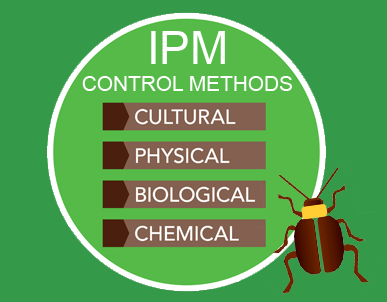Physical Methods of IPM (Integrated Pest Management)
Reduction of pest population by using device which affect them physically or alter their physical environment. Manipulation of temperature, humidity, light is used for this purpose. This includes following types:
1. Application of heat
Super heating of empty godown to a temperature above 500C for 1012 hours will kill the hibernating stored grain pest. Exposing in the infested grains to the sun on a pucca floor kills stored grain insect in the adult stage.
2. Application of Cold
Refrigeration at 50C of all eatables including dry fruits will kill the insect. The stored grain pest are also killed by exposing them to subzero temperature opening the doors and windows of godowns.
3. Manipulation of moisture
By raising lowering the moisture content of food and other materials. Unfavorable condition are created for insect pest. By draining away stagnant water to the maggot of mosquitoes are killed. Reducing the moisture content of grains below 80% would save them from most of insect. By soaking the logs in water over extended period (15 days) boring weevils are downward.
4. Sun drying
Stored grain pests can be easily controlled by sun drying.
5. Use of radiation
Ionizing radiation are used to make insect sterile and their by preventing their further generations. 6. Use of sound: Ultrasonic sound is used to control rats.
